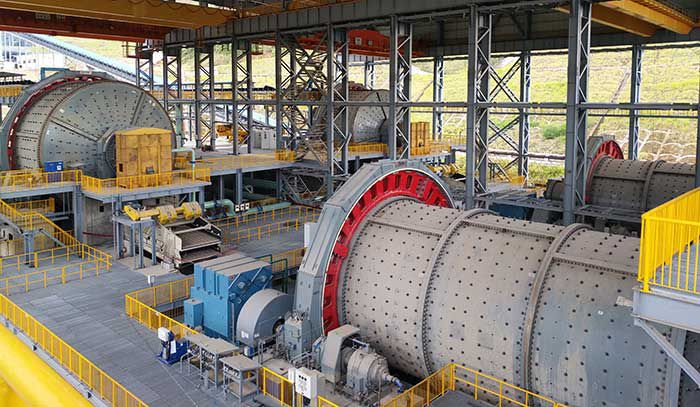1. Introduction
In modern mining operations, the ball mill stands as a critical device for ore grinding and pulverization. However, the harsh working conditions of ball mills, characterized by continuous friction and mechanical impacts, lead to rapid wear of liners. This wear directly undermines equipment longevity and operational efficiency. Traditional liner processing technologies, such as casting, forging, and welding, often fail to address challenges posed by high-intensity workloads, resulting in short liner lifespans, frequent maintenance, and unstable performance. To overcome these limitations, this study proposes an optimized liner processing methodology and systematically evaluates its impact on ball mill performance through experimental validation.

2. Analysis of Liner Processing Technologies
2.1 Current Processing Technologies
- Casting: Utilizes materials like high-manganese steel and alloy steel. While efficient, uneven cooling rates and grain boundary defects reduce hardness and wear resistance.
- Forging: Enhances material density and mechanical properties but struggles with complex geometries.
- Welding: Suitable for repairs but introduces heat-affected zones and coarse grain structures.
2.2 Improved Processing Technologies
To address these limitations, the following advancements were implemented:
1. Directional Solidification
By controlling temperature gradients during solidification, crystal structures are optimized, enhancing hardness and wear resistance.
2. Hot Isostatic Pressing (HIP)
Combining high temperature and pressure eliminates grain directionality, improving material uniformity and strength.
3. Laser Cladding
High-energy lasers deposit wear-resistant coatings, minimizing surface defects and extending liner lifespan.
3. Key Performance Indicators of Ball Mills
The performance of a ball mill is quantified through four critical metrics:
3.1 Productivity (QQ)
Q=V×ρQ=V×ρ
where VV is mill capacity (m³) and ρρ is ore load density (kg/m³).
3.2 Grinding Efficiency (EE)
E=Output Particle FinenessInput Particle FinenessE=Input Particle FinenessOutput Particle Fineness
3.3 Energy Consumption (PP)
P=Pmotor×tP=Pmotor×t
where PmotorPmotor is motor power (kW) and tt is operating time (h).
3.4 Media Wear (WW)
W=k×m×ΔhW=k×m×Δh
where kk is wear coefficient, mm is ore mass (kg), and ΔhΔh is height reduction of grinding media (mm).
4. Experimental Design and Data Analysis
4.1 Experimental Setup
A comparative study was conducted using a standard ball mill with high-manganese steel liners. Two groups were tested:
- Traditional Group: Conventional casting with natural cooling.
- Improved Group: Directional solidification, HIP, and laser cladding under varied parameters.
Key variables included:
- Temperature: High (1,200°C), Medium (1,000°C), Low (800°C).
- Cooling Methods: Water, air, natural.
- Pressure (HIP): 15–25 MPa.
- Solidification Directions: X, Y, Z.
4.2 Results and Discussion
Table 1: Performance Comparison of Liner Processing Technologies
| Process Group | Temperature (°C) | Cooling Method | Solidification Direction | Pressure (MPa) | Hardness (HRC) | Wear Resistance Index | Grain Structure |
|---|---|---|---|---|---|---|---|
| Traditional | – | – | – | – | 45.2 | 120 | Coarse |
| Improved | 1,200 | Water | X | 20 | 52.8 | 180 | Fine |
| Improved | 1,000 | Natural | Y | 15 | 49.5 | 150 | Medium |
| Improved | 800 | Air | Z | 25 | 48.0 | 130 | Fine |
Key Findings:
- Hardness: High-temperature water cooling achieved the highest hardness (52.8 HRC vs. 45.2 HRC for traditional methods).
- Wear Resistance: The same configuration yielded a 50% improvement in wear resistance (Index: 180 vs. 120).
- Grain Structure: Directional solidification along the X-axis produced finer grains, enhancing structural integrity.
- Pressure Impact: HIP at 20 MPa maximized hardness, while lower pressures (15 MPa) retained moderate performance.
5. Impact of Improved Technologies on Ball Mill Performance
5.1 Enhanced Productivity
Optimized liners reduced downtime by 30%, increasing QQ by 15% through sustained operational stability.
5.2 Energy Efficiency
Improved wear resistance lowered friction losses, reducing PP by 12% compared to traditional methods.
5.3 Extended Lifespan
Laser-clad coatings and HIP-treated liners exhibited 40% less media wear (WW), doubling maintenance intervals.
6. Conclusion
This study demonstrates that advanced liner processing technologies—directional solidification, HIP, and laser cladding—significantly enhance ball mill performance. Key parameters such as high-temperature water cooling and optimized pressure settings yielded superior hardness, wear resistance, and grain refinement. These improvements translate to higher productivity, reduced energy consumption, and prolonged equipment lifespan, offering actionable insights for optimizing ore grinding processes in mining operations.
